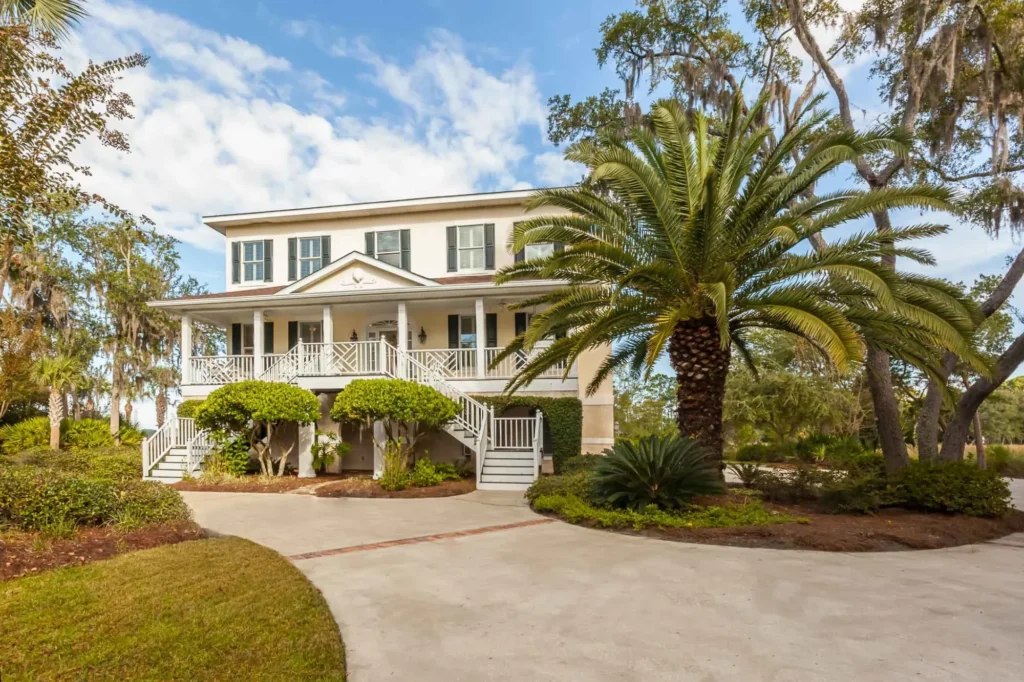
Get Rid of Millipedes in Your Johns Island Home for Good
Canopies of oak and palmetto keep Johns Island soils moist, sending millipedes toward doors and mudrooms at night.
We focus on drying the first foot of wall, treating beneath decks, and tightening entries for long-term control. Reach All U Need Pest Control at 1 (888) 239-BUGS.
Pest Control Services in Johns Island, SC
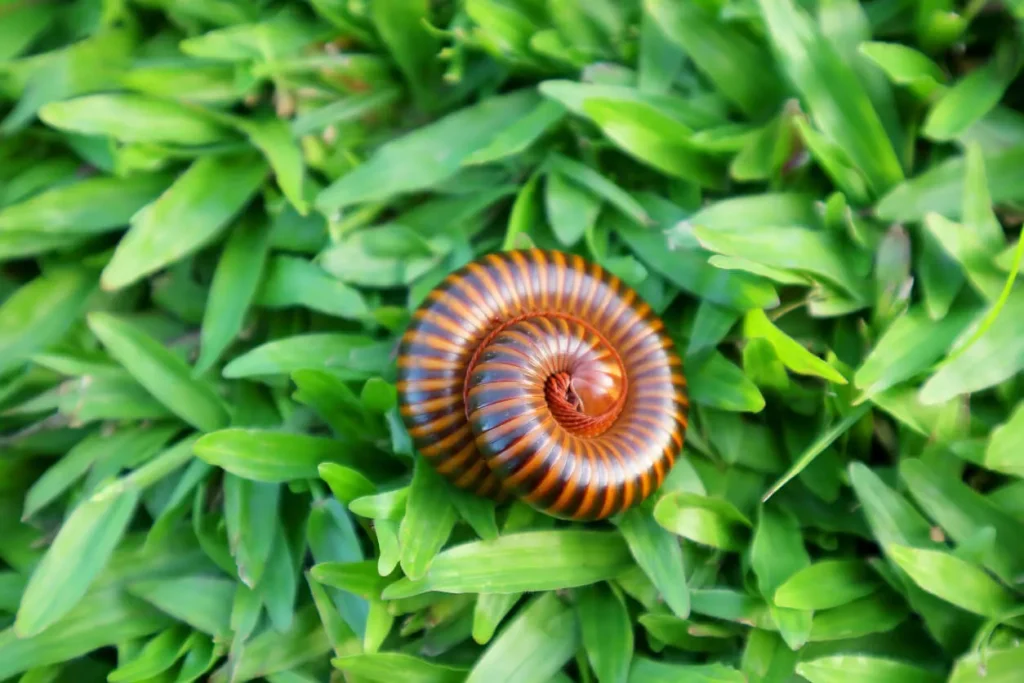
Millipede Control in Johns Island, SC
Millipedes on Johns Island, South Carolina, can become more than just a casual inconvenience—they are a visible warning that moisture and dense vegetation are inviting these pests close to your living space. These slow-moving, many-legged arthropods thrive in the island’s fertile soils, shaded woods, and thick mulch beds. Following heavy downpours, seasonal flooding, or the long stretches of humidity that define Lowcountry summers, millipedes often emerge in droves, showing up on porches, around garage doors, in crawl spaces, and even inside living rooms. Although millipedes are not harmful in the sense of biting or stinging, their defensive secretions can discolor porous surfaces and irritate sensitive skin, which makes quick, professional intervention a smart decision.
The natural environment of Johns Island makes it especially inviting for millipedes. Its subtropical climate, proximity to tidal rivers and creeks, and lush vegetation create a cycle of moisture that encourages millipede populations to flourish. Homes built with crawl spaces, shaded porches, and raised foundations create cool, damp microclimates where millipedes find shelter. Landscapes filled with live oaks, palmettos, azaleas, and camellias create year-round organic debris. Pine-straw mulch, a common choice across Johns Island, holds in water and provides excellent hiding spots. This unique mix often results in waves of millipedes moving toward homes during seasonal moisture spikes.
All U Need Pest Control offers millipede management designed with Johns Island homes in mind. From the waterfront estates near Bohicket Creek to family homes near Maybank Highway and the newer subdivisions spreading inland, our strategies target the sources of millipede infestations. We blend moisture reduction, habitat modifications, and careful applications that keep millipedes outside where they belong. Our goal is not only to address today’s nuisance but also to prevent the recurring invasions that often follow storms.
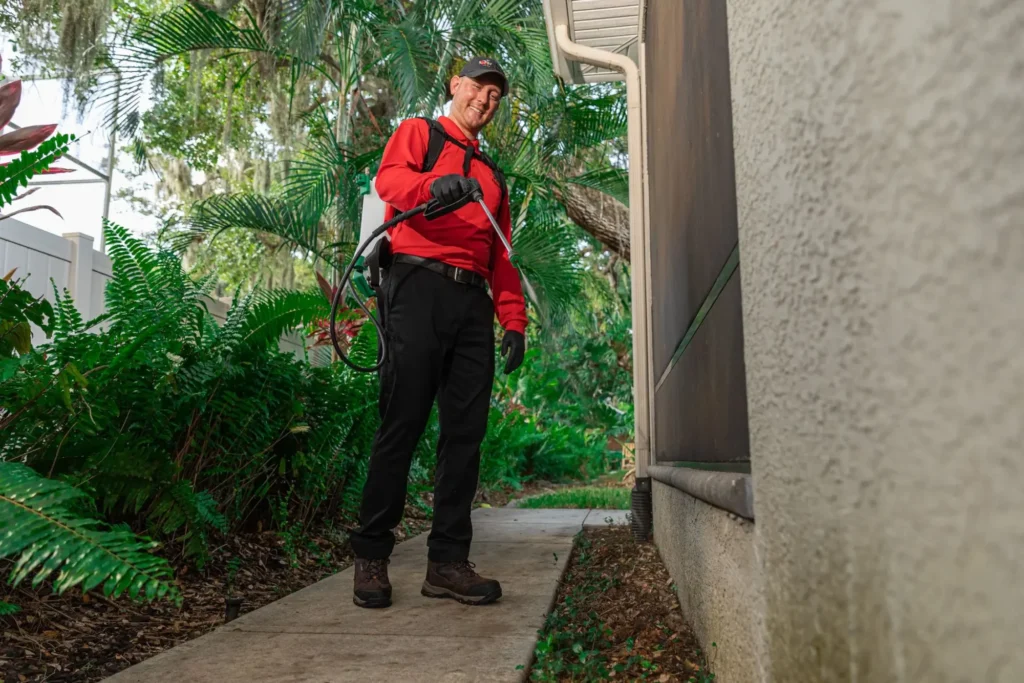
How to Get Rid of Millipedes in Johns Island, SC
The key to solving millipede problems on Johns Island lies in understanding why they appear in the first place. These creatures primarily consume decaying organic matter such as fallen leaves, mulch, and damp soil. When heavy rainfall soaks the ground or when tidal waters push moisture higher into yards, millipedes begin searching for drier places to escape. This often leads them to porches, foundations, and even inside homes. Simply sweeping them away does not solve the issue because the conditions remain favorable for their return.
A location-specific plan for Johns Island should include:
Correct the moisture. Improving drainage is essential. Extend downspouts, use splash blocks, dry out crawl spaces, and adjust irrigation so the soil near the foundation isn’t perpetually damp. Many homes on Johns Island are built on raised piers or slabs in low-lying areas, so encapsulating crawl spaces or adding dehumidifiers can greatly reduce the moisture millipedes depend on.
Modify the habitat. Replace or thin dense pine-straw mulch near foundations with alternatives such as gravel that dry faster. Clear leaf litter under massive live oaks after rain. Keep shrubs trimmed back from siding and porch lattice to improve airflow and reduce dark, humid hiding places.
Seal entry points. Door sweeps, sealed thresholds, screened crawl-space vents, and masonry weep-hole covers block the common ways millipedes enter. Even small gaps can allow a steady stream of these pests inside during their seasonal migrations.
Targeted treatments. Professional applications placed precisely around perimeters and entry points create a protective buffer. The exact placement and timing matter more than heavy spraying—especially in Johns Island’s climate where rainfall patterns can quickly wash away poorly applied treatments.
Maintain a program. Seasonal checkups are important to re-establish barriers during the wettest parts of the year. Late spring through early fall, and after tropical rain systems, are the times millipedes are most likely to appear.
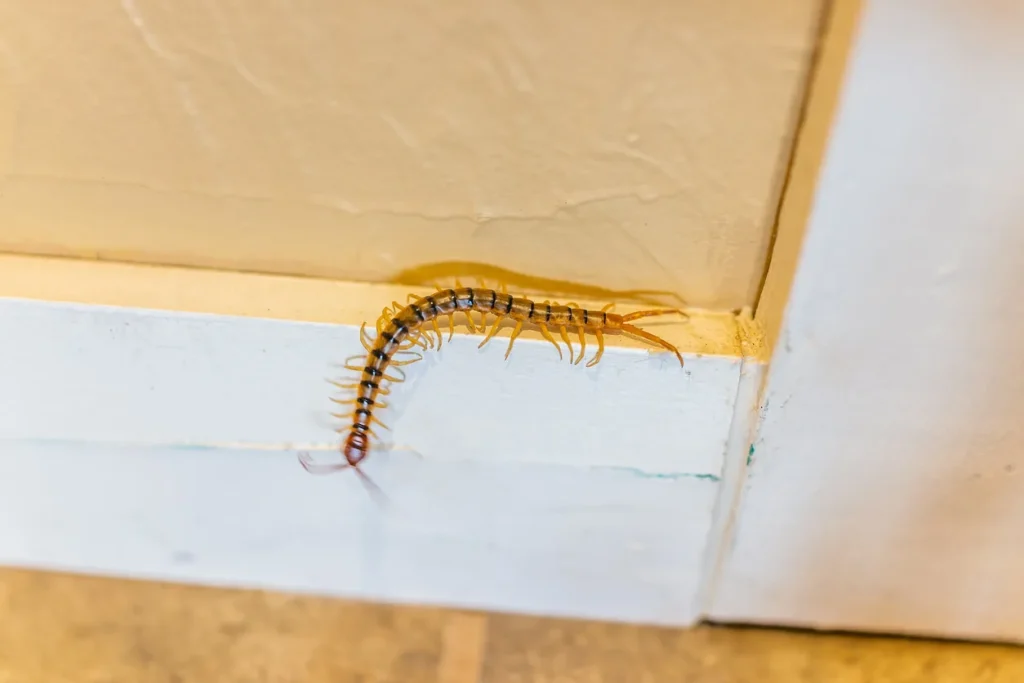
Millipede Treatment in Johns Island, SC
Our approach to treatment is not one-size-fits-all. Instead of blanket spraying, All U Need Pest Control begins with a thorough inspection to understand the specific reasons millipedes are showing up and where they are most concentrated. We then design a custom treatment plan that targets the unique conditions present in Johns Island’s environment.
- The variety and density of trees, shrubs, and groundcover in your yard that create shade and moisture.
- The depth and type of mulch or stone used near your foundation, porches, or garden beds.
- How irrigation systems are set, including overspray onto walls and areas that remain constantly damp.
- Proximity to tidal creeks, retention ponds, shaded woods, or low-lying zones that hold moisture after rain.
After identifying these conditions, we fine-tune your treatment plan by focusing on:
- When and where millipede activity occurs, such as after thunderstorms, during high tides, or overnight along garage floors and porches.
- Environmental changes like tropical weather systems or unusual heat waves that push millipedes indoors.
Unlike services that rely on broad applications, we use Integrated Pest Management (IPM) techniques tailored to Johns Island’s microclimates. This ensures effective removal now and reduces the likelihood of millipedes reappearing later.
Comprehensive Inspection/Consultation
Our process begins with a property-wide inspection that examines moisture control and possible harborage zones. We assess grading, mulch layers, gutter performance, irrigation overspray, and crawl-space humidity. Raised homes are checked for leaks around lattice and crawl-space doors. Historic island properties often require special attention to vapor barriers and shaded foundations surrounded by dense landscaping. Afterward, we provide a clear action plan designed for your budget and goals.
Treatment
Treatment focuses on sealing the routes millipedes travel and applying targeted products along foundations, porches, decks, and garages. Raised homes require special techniques to safeguard materials while maximizing results. We time treatments around rain patterns to create a reliable barrier when millipedes are most active.
Ongoing Maintenance
The cycles of rainfall and high humidity on Johns Island mean that conditions favorable to millipedes can return quickly. Our maintenance service restores protective barriers, monitors high-risk areas, and prevents reinfestations after major storms or king tides. These seasonal checkups help ensure your home remains comfortable and millipede-free throughout the year.
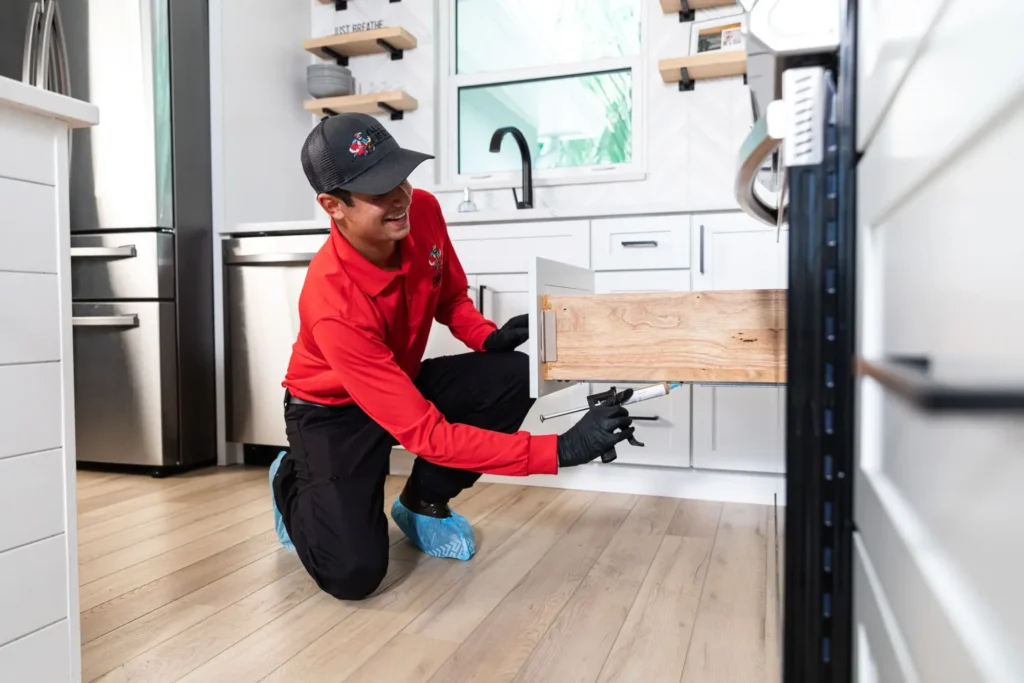
Signs of a Millipede Infestation in Johns Island, SC
Sightings in Damp Areas
Millipedes prefer places with steady moisture. Inside Johns Island homes, they are often seen in crawl spaces, basements, bathrooms, and along shaded baseboards. Outdoors, you might notice them hiding under doormats, in thick pine straw against siding, or around porch steps. Large clusters frequently appear indoors after periods of extended rainfall.
Damage to Plants
Though millipedes mostly eat decaying plant material, they sometimes feed on delicate seedlings or soft new growth in shaded gardens. If you notice small chew marks on tender plants, especially near mulched beds, it could indicate millipede activity. Reducing organic debris and improving airflow around plantings helps curb this behavior.
Dead Millipedes
Inside homes, millipedes often die quickly due to the drier indoor air. Finding curled-up carcasses near doors, garage floors, or thresholds suggests that outdoor moisture is driving them indoors. Simply cleaning them up won’t stop new ones from entering—the underlying conditions must be addressed.
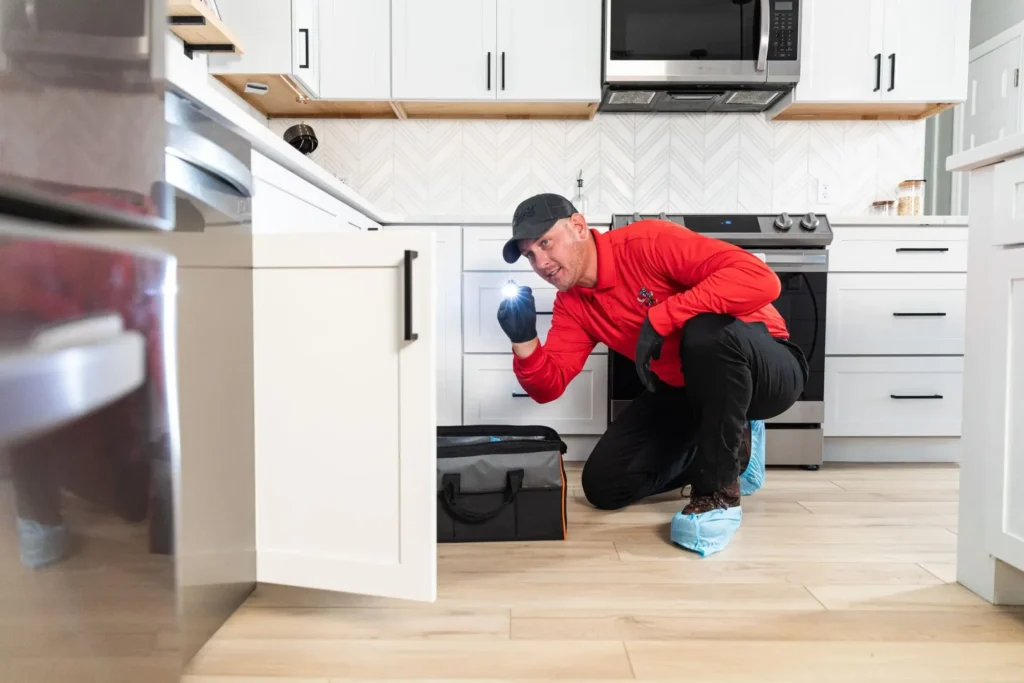
How to Check for Millipedes in Your Johns Island Home
Inspecting for millipedes involves looking where they are most likely to hide and travel:
- Moisture-heavy spaces like crawl areas, bathrooms, and garages.
- Entry points such as unsealed door thresholds, weep holes, and pipe openings.
- Mulch and leaf piles pressed against foundations and under shrubs near walls.
- Yard low spots, patios, and areas where downspouts release water after rain or tides.
If you occasionally see millipedes but cannot trace where they are coming from, a professional inspection is often needed to uncover hidden entry points and conditions contributing to infestations.
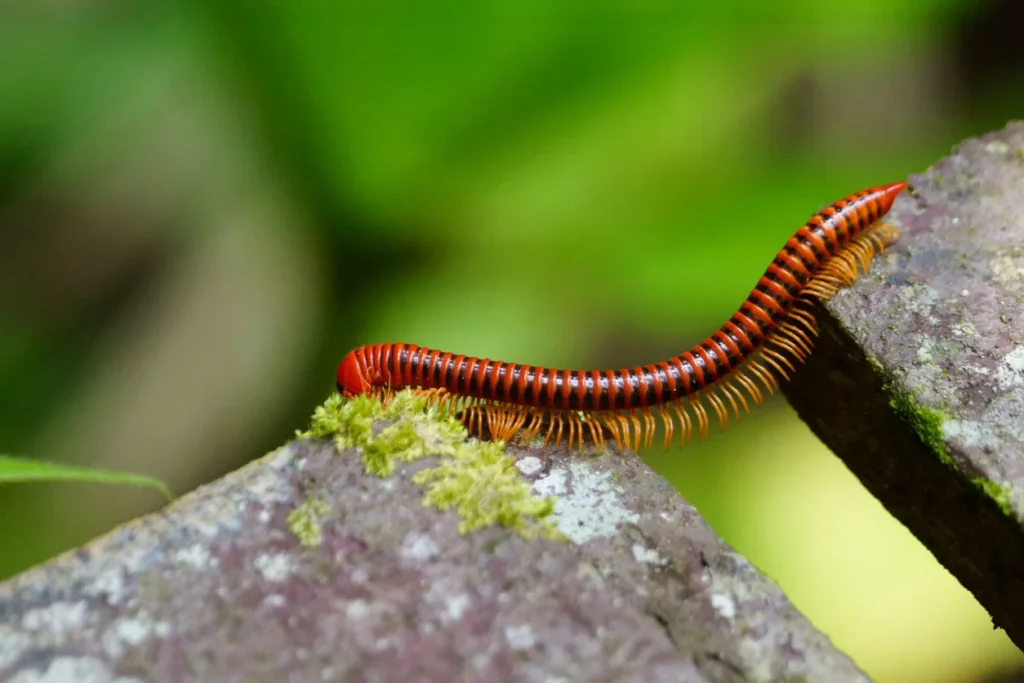
What Do Millipedes Look Like?
Millipedes are long, cylindrical arthropods with numerous segments, each carrying two pairs of legs. On Johns Island, they are typically dark brown to gray, blending easily with soil and mulch. Unlike the flatter, faster centipedes, millipedes move slowly and curl tightly into a spiral when threatened.
Other features include:
- Dark, earthy-colored bodies that camouflage well in moist soil and pine straw.
- Rounded shape with many leg pairs giving them a twig-like appearance.
- Short antennae used to sense their surroundings in dark, humid spaces.
Millipedes can live several years and reproduce in damp soil or mulch. Keeping foundations dry and clear of debris helps limit their populations.
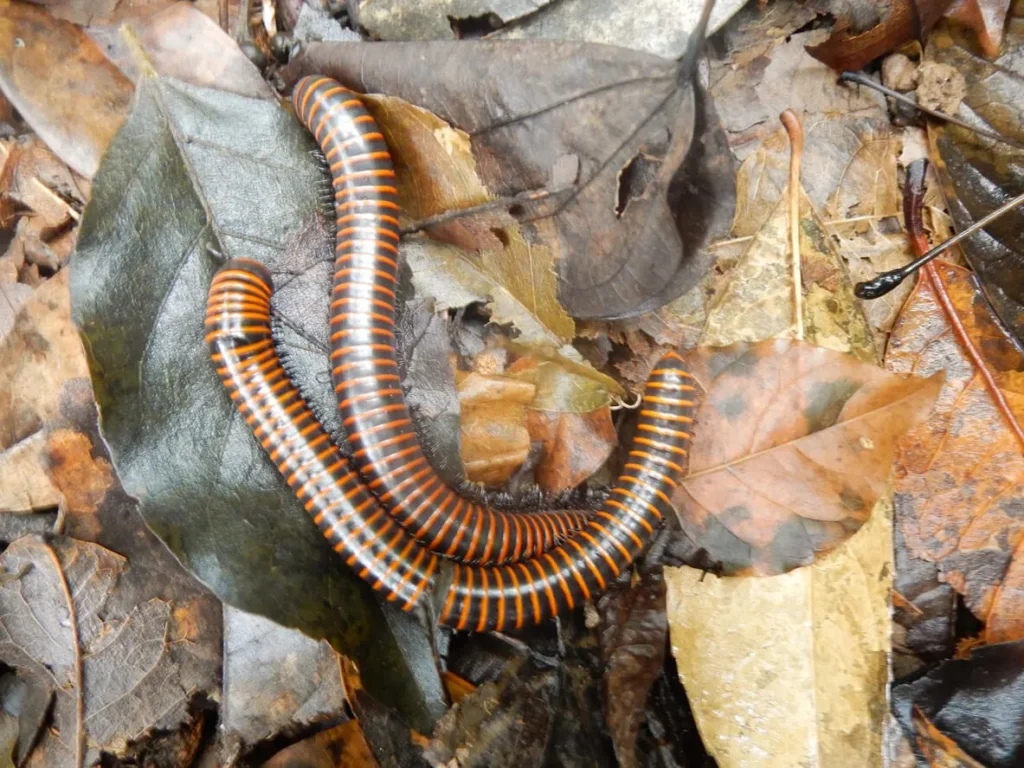
Eco-Friendly Solutions
At All U Need Pest Control, our priority is protecting families, pets, and Johns Island’s delicate environment while still eliminating millipede issues effectively. Johns Island is surrounded by tidal creeks, salt marshes, and forested wetlands, making environmentally conscious approaches vital. Rather than relying solely on chemical applications, we combine sustainable practices with precise treatments so you can enjoy your home without harming the ecosystem that makes Johns Island unique.
Minimum-Risk Pesticides
Whenever treatments are required, we select formulations with strong safety records that work effectively on millipedes while posing minimal risk to people, pets, and non-target wildlife. Placement is key—products are applied only along the areas millipedes use, such as thresholds, porch steps, garage entries, and crawl-space access points. By restricting applications to these direct travel zones, we reduce the amount of product used while maximizing results. This targeted approach helps preserve the island’s natural surroundings while still addressing your home’s needs.
Eco-Friendly Solutions
Our strategies always incorporate low-impact methods to complement treatments. For example, we recommend replacing thick pine straw with a thinner layer or stone-based mulch that dries more quickly. We also encourage drainage improvements like extending downspouts and grading soil away from the home. These simple eco-friendly steps remove the conditions millipedes thrive on, reducing the need for future treatments. Many homeowners on Johns Island value this lighter footprint, especially those living near Bohicket Marina, Kiawah River, or along forested preserves where wildlife thrives.
IPM Practices
Integrated Pest Management (IPM) is central to our work. On Johns Island, IPM involves more than just spraying—it means inspecting, identifying harborage areas, sealing entryways, reducing excess moisture, and timing treatments properly. With Johns Island’s combination of tidal flooding, frequent thunderstorms, and thick vegetation, IPM ensures a balanced, long-term solution. Instead of quick fixes, we help homeowners build an environment that makes it much harder for millipedes to return.
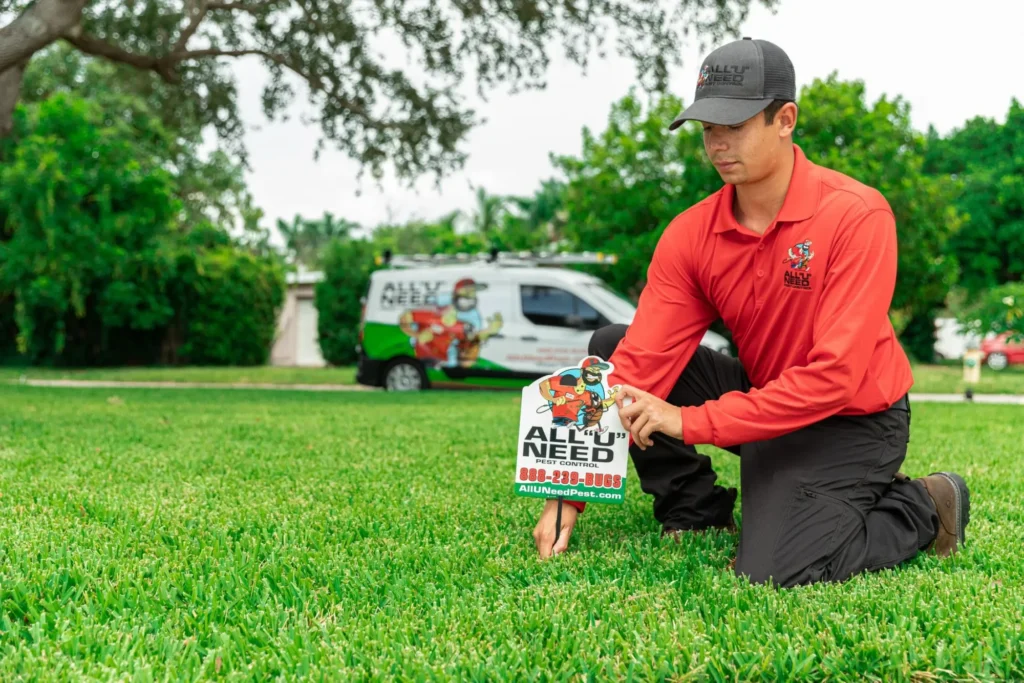
How to Prevent Millipedes in Johns Island, SC
Preventing millipedes begins with eliminating the conditions that encourage them. Because Johns Island has both low-lying wetlands and heavily wooded areas, millipedes find plenty of organic material and damp soils to survive in. Proactive prevention steps can dramatically reduce their chances of entering your home.
Reduce Moisture Levels
Moisture is the main factor drawing millipedes. Use dehumidifiers indoors when needed, particularly in basements, crawl spaces, or closed-in porches. Make sure bathroom fans are run long enough to remove humidity, and check that vents actually lead outdoors instead of into crawl areas. On the exterior, extend downspouts several feet from the foundation, install splash blocks, and eliminate yard depressions that collect standing water. If you have irrigation, avoid overwatering near your home’s foundation. These steps not only discourage millipedes but also protect against other pests that thrive in damp conditions.
Seal Entry Points
Preventing millipedes from getting inside requires eliminating easy access. Install new door sweeps or replace worn ones, fill gaps around utility lines, and cover masonry weep holes with breathable covers. Check crawl-space vents and repair any damaged screens. After major storms, revisit these areas since shifting soil or high water can expose new gaps. On Johns Island, raised homes are common, which means crawl-space doors and lattice should also be secured to keep millipedes from slipping in.
Remove Organic Debris
Thick piles of pine straw, leaves, and mulch pressed against siding create perfect millipede harborage zones. Rake up debris after storms and bag it for disposal. Compost piles should be kept away from foundations. Avoid creating long-term wood or leaf piles near your home, especially in shaded areas under live oaks. By keeping the perimeter clear and dry, you cut off one of the most important resources millipedes depend on.
Change Your Landscaping
Thoughtful landscaping can help prevent infestations. Choose plant varieties that require less water near the foundation. Create stone or gravel borders 8 to 12 inches wide along the base of your home, which speed drying and discourage millipede activity. Thin shrubs and allow air to circulate more freely. If you use pine straw for aesthetics, keep it thin around the house and refresh it less frequently to prevent heavy buildup. Landscaping adjustments like these are particularly valuable in Johns Island neighborhoods where dense natural vegetation meets residential properties.
Keep Your Home Clean
Cluttered porches and garages often harbor moisture and shade, attracting millipedes. Elevate stored items, avoid stacking damp materials near entry points, and remove soaked mats or soil bags after rain. Indoors, fix small leaks promptly and wipe condensation on windows during humid weather. Clean, dry environments provide fewer cues for millipedes to follow, reducing their numbers indoors.
Work With a Pest Control Expert
Partnering with a professional ensures consistent prevention and effective long-term control. At All U Need Pest Control, our regular services include:
- Sealing entry points like utility penetrations, door gaps, and masonry weep holes while preserving needed airflow.
- Applying treatments along millipede travel routes, particularly during Johns Island’s peak rainfall and tide cycles.
- Offering property-specific advice, from mulch management and crawl-space moisture solutions to drainage improvements tailored to Johns Island’s environment.
Location Contact:
419 N Cedar St Summerville, SC 29483
Get Directions for 419 N Cedar StSummerville, SC 29483 on Google Maps843-489-8818
Call All "U" Need Pest Control